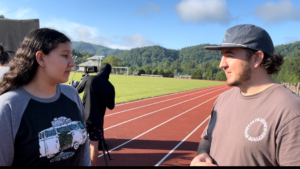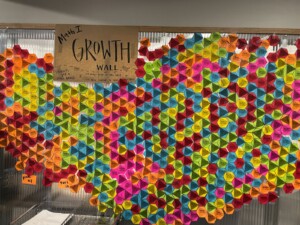Despite Bad News, Progress is Possible

I have a hard time watching evening news–especially in the last few weeks–the headlines are hard to swallow. You can’t help but assume that things are getting worse. It’s depressing. But the news doesn’t give you an accurate picture of the long term trends that are making life better for more people on this planet.
Steven Johnson, speaking on CNN asks, “Over the past two decades, what have the U.S. trends been for the following important measures of social health: high school dropout rates, college enrollment, juvenile crime, drunken driving, traffic deaths, infant mortality, life expectancy, per capita gasoline consumption, workplace injuries, air pollution, divorce, male-female wage equality, charitable giving, voter turnout, per capita GDP, and teen pregnancy?”
The answer for all of them is the same: “The trend is positive. Almost all those varied metrics of social wellness have improved by more than 20 percent over the past two decades.” Johnson continues, “Americans enjoy longer, healthier lives in more stable families and communities than we did 20 years ago. But other than the crime trends, these facts are rarely reported or shared via word-of-mouth channels.”
The media is biased toward negative and extreme events. That’s certainly the case in education, even quality trade pubs don’t adequately report on incremental progress and underlying trends. Horrible events monopolize media coverage.
Johnson’s new book, Future Perfect: The Case For Progress In A Networked Age is an optimistic view of the future. While he’s a more polished writer with a broader scope, in my book and blog I try to do the same for learning.
The basic tool set of learning is getting better — fast! It’s so much easier to learn now than it was 20 years ago (pre web). It’s so much easier to learn now than five years ago (pre smartphone and tablet). And we’re just beginning to understand the power of adaptive learning tools, of special needs tools, and of language acquisition tools.
Massively Open Online Courses (MOOCs) are an example of how technology can extend the reach of great teachers while extending opportunity to people worldwide. Think about it: The best professors in the world are now available for free to anyone on the planet with a broadband connection; that’s just amazing!
What about relationships? Progress on personalized learning can mean more quality time with a teacher. School of One (powered by New Classrooms) is a great example of using adaptive learning and dynamic scheduling to create more time for small group instruction. The same is true at KIPP Empower. Good technology improves learning and builds build community.
The potential to improve working conditions and career options for learning professionals is so exciting. Blended schools are staffed by teams that can better support new teachers and better utilize paraprofessionals. Distributed workforce strategies are making it possible for specialists to live and work anywhere anytime (PresenceLearning and Connections Education offer online speech therapy).
Recently on Facebook, people that I really respect were trashing “hungry for-profit companies.” Same mantra on NPR. Those “hungry companies” are putting up risk capital to build new tools that will power new schools and significantly improve achievement and completion rates in this country and help extend access to hundreds of millions of young people worldwide. Private enterprise has the ability to aggregate and deploy return seeking capital — something governments and nonprofits aren’t equipped to do — and that is good for producing and scaling innovation.
Johnson notes that improvements in health come from a “complex web of forces.” That will be true of better learning as well. We need to get smart about using the right form of capital for the right job. The big advances in learning will often come as a result of public-private partnerships where government agencies set ambitious goals, when philanthropy encourages long term thinking and extracts risk, and when private enterprise produces innovation–watch NYC iZone for more good examples of this in 2013
Real college and career ready standards for (nearly) all kids in this country is a really important step toward more equitable outcomes. It also frames a new opportunity and improves the ability to share content, tools, data, and ideas. Companies that I work with are creating valuable free core applications that are making it easier and cheaper to personalize learning. The combination or clear common standards and better tools creates new opportunity for districts–especially RTTD winners (like Puget Sound ESD!)–and school networks and states to work together on big solutions.
After a horrible month of news, remember the broader trends are in the right direction — things are getting better for you and for your kids. We have the best chance ever to make big gains in this decade. We have the best chance ever to reach kids that have never had a chance.








0 Comments
Leave a Comment
Your email address will not be published. All fields are required.